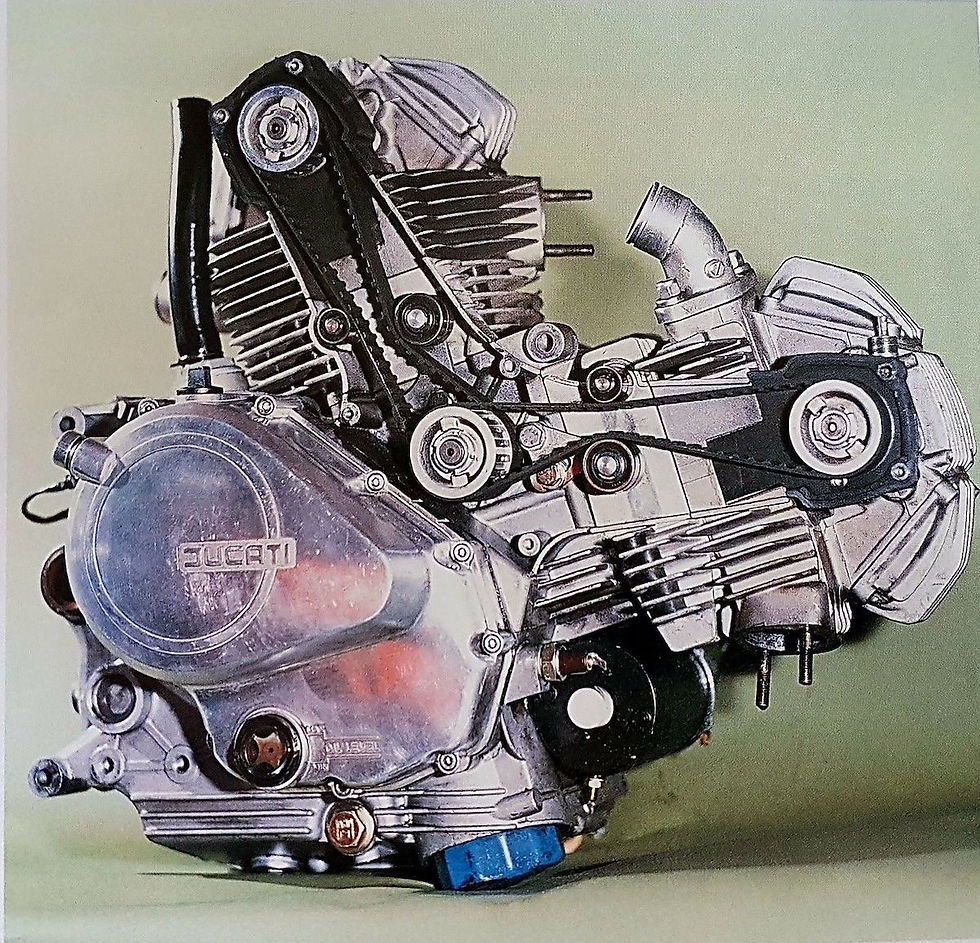Motorcycle Legends: Cagiva Elefant 900
- LJ Motors
- Aug 14, 2024
- 4 min read

Founded in 1978, Cagiva focused on making small displacement road going two stroke machines, and at one point in time were producing the most motorcycles in Italy. Their most famous bike couldn’t be further removed from this template though.
Cagiva always had an elephant in their logo, but this would be the very first bike to take the name. After acquiring Ducati in the late 80s they wanted to put their engines to good use, fitting 350, 650, 750 and eventually 900 twins to the Elefant frame. Although Elefants were all over Europe, the name only really got global attention in 1990 when the 900 took overall victory at the Dakar rally. Breaking a long sequence of Honda victories in the process.
Dakar Glory

Edi Orioli rode the Elefant to victory in both 1990 and then again as a privateer in 1994, which did a lot to showcase the ability of the machine. The 1994 effort was arguably more significant as it was with an ageing machine and he didn’t have any factory trucks looking after him.
His bike was obviously a dedicated race machine, but Cagiva did offer a very similar race spec bike to the public in the form of the Lucky Explorer Edition. Although this was a limited production motorcycle, it helped build interest in the model line even though it was a fair bit more pricey than the competition. It also gave us a glimpse into the future, with modern middleweight ADVs all getting engines from road bikes today.
Over the years the Pantah powered Elefant earned a devout following and today the fans of the bike outnumber the survivors. They are pretty rare, even the standard bikes are getting more expensive. Well, those that actually run.
A Lucky Explorer

Only 1000 of these near race spec machines were built. Getting most of the factory kit, they were very well equipped for the time. Suffice to say, not many of these original bikes remain and they demand a premium today.
At around 450 pounds it is bang on par with modern middleweight ADVs, and just as powerful, with the Ducati 90 degree twin good for 68 horsepower. It was capable of reaching 100 mph in the desert flats, and 120 mph on the road. So it wasn’t slow either, but these exclusive bikes were well out of reach for most.
In an effort to make the Elephant more attainable, Cagiva subsequently worked to get this machine ready for wider public consumption. Dropping the EFI system for cheaper carbs, reducing the seat height a little and increasing the on road stopping power by giving it a twin rotor setup up front. Replacing some of the more costly race spec components brought the cost down to a far more reasonable sum and in this standard trim it sold relatively well throughout Europe.
First Ducati For The Dirt

With so many cheaper options out there, they needed something to differentiate themselves from the rather capable crowd. Their secret weapon was the Ducati Desmo power plant, not only did it offer impressive performance, it also secured them a vast aftermarket, which ensured enthusiasts would never be short of spares.
That 900cc twin continues to inspire, as the Cagiva presents itself as the first Ducati powered off road bike. The Pantah engine gives the bike character that sets it apart from the arguably more robust, and indisputably more reliable offerings from the Japanese contemporaries. With these bikes needing the usual “Ducati” level of maintenance, it is a tradeoff not everyone would be willing to make.
Any Italian vehicle, be it a motorcycle, car, or lawnmower, it will always have the odd electrical gremlin. These Cagiva machines are no exception, and that Ducati engine only adds fuel to the fire (err, so to speak). These bikes are for those that dare to be different, especially when you consider how unusually cool they are.
The Legend Lives On

Like so many Italian motorcycle manufacturers, Cagiva never enjoyed a sustained period of financial stability. Their tenure as Ducati owners was fraught with disaster, and instead of investing in the company they chose to simply use their existing technology as they saw fit.
In the case of the Elefant, it was innovative, and brilliant. Other ducati models of the era were mostly outdated and overpriced. To stay afloat they were forced to sell off the Ducati brand, and even that sale didn’t prevent the company from eventual financial ruin. The Elephant lives on as their legacy, and has already been reborn as two different ADVs.
Ducati led the charge with their exquisite DesertX, with its design paying obvious tribute to the Elefant and an engine which is essentially the modern equivalent of the old Pantha. But, the bike that shares a more direct link to the Cagiva comes from the company that rose from Cagiva’s ashes: MV Agusta. The limited edition LXP Orioli is very much the spiritual successor to the Lucky Explorer, but it lacks the Ducati V-twin, and has, at best, limited off-road credentials, credentials that the DesertX has in spades.
Cagiva Elefant 900 Lucky Explorer Specifications
Price Range | $3,000 - $11,000 |
Engine | 904cc L-twin |
Power | 68hp (58kW) |
Torque | 58 lb-ft (78 Nm) |
Weight | 459 lbs (208 kg) wet |



